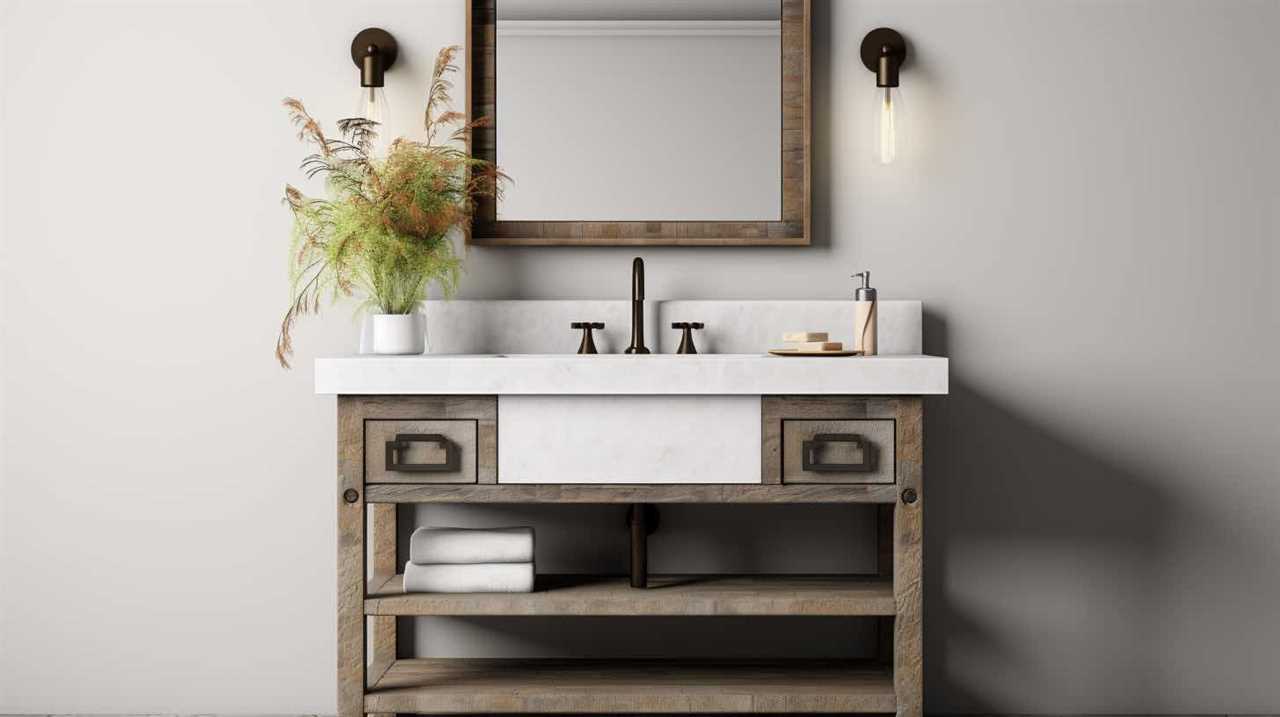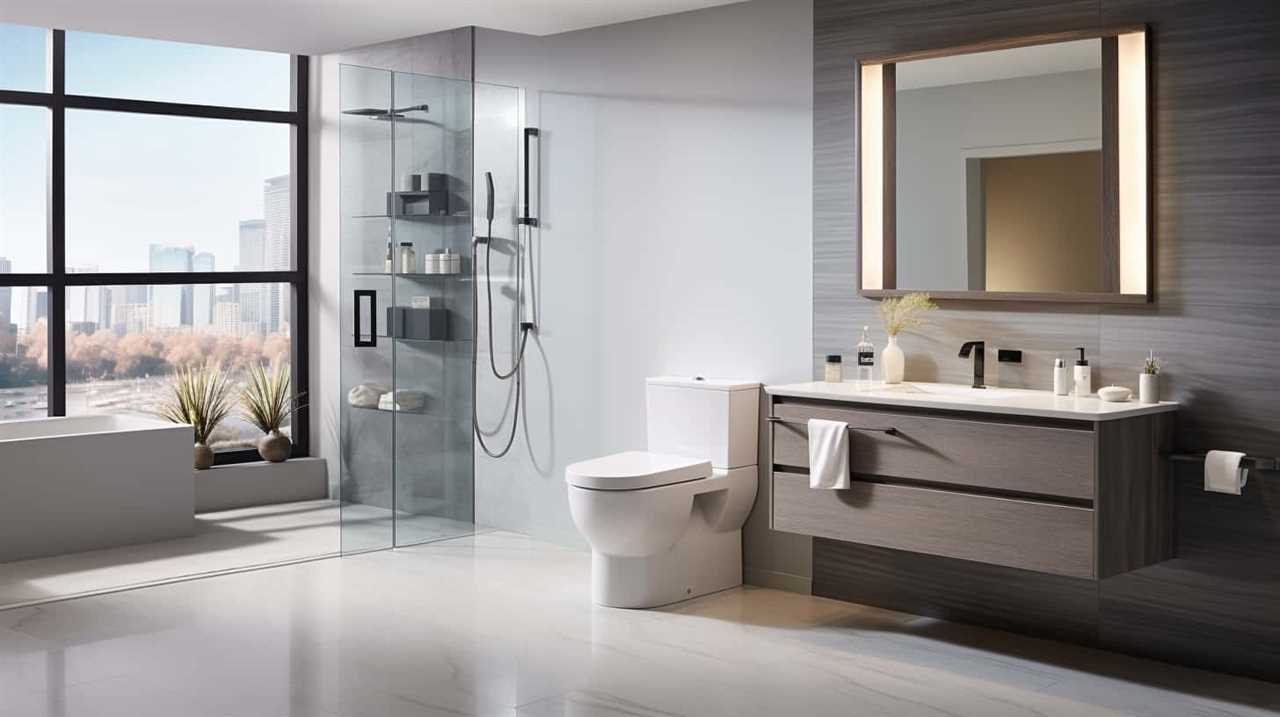Do your bathroom exhaust fans seem to be forgotten? It’s time to show them some love and give them the attention they deserve.
We all know how important it is to keep our spaces clean and fresh, and your bathroom exhaust fans play a crucial role in maintaining healthy indoor air quality.
In this article, we’ll explore the signs that your exhaust fan needs cleaning, how often you should clean it, and provide a step-by-step guide to keep your fans in tip-top shape.
Let’s dive in and master the art of exhaust fan cleaning!

Key Takeaways
- Regular cleaning of bathroom exhaust fans is important to prevent the buildup of dirt, dust, and debris.
- Cleaning the fan helps maintain its efficiency, reduces the risk of overheating, and improves ventilation and indoor air quality.
- Neglecting to clean the fan can lead to reduced performance, increased energy consumption, and the growth of mold and mildew.
- Signs that indicate the need for cleaning include excessive noise, weak airflow, foul odors, and visible dirt or dust on the fan blades or grille.
Importance of Cleaning Bathroom Exhaust Fans
Cleaning bathroom exhaust fans is an essential maintenance task that ensures optimal performance and air quality in our bathrooms. Regular maintenance offers several benefits for bathroom exhaust fans.
Firstly, it helps to prevent the buildup of dirt, dust, and other debris, which can impede the fan’s ability to effectively remove moisture and odors from the bathroom. By keeping the fan clean, it can function efficiently, reducing the risk of overheating and prolonging its lifespan.
Secondly, regular cleaning prevents the growth of mold and mildew, which thrive in moist environments like bathrooms. Mold and mildew not only contribute to unpleasant odors, but they can also pose health risks, particularly for individuals with respiratory issues.
Lastly, by cleaning the exhaust fan, we can maintain good indoor air quality, removing harmful contaminants and improving ventilation. Neglecting to clean bathroom exhaust fans can lead to common problems such as reduced performance, increased energy consumption, and potential damage to the fan motor. Therefore, regular maintenance is crucial for ensuring the optimal functioning and longevity of bathroom exhaust fans.

Signs Your Bathroom Exhaust Fan Needs Cleaning
After regularly maintaining and cleaning your bathroom exhaust fan, it is important to be aware of the signs indicating that it may need cleaning again. Regular maintenance is crucial for ensuring the proper functioning of your bathroom exhaust fan and preventing common problems that can arise. Here are some signs that your bathroom exhaust fan needs cleaning:
| Sign | Description |
|---|---|
| Excessive noise | If your exhaust fan is making loud or unusual noises, it could be a sign that it is clogged with dirt and debris. |
| Weak airflow | If you notice that the airflow from your exhaust fan is weaker than usual, it may be due to a buildup of dust and grime on the fan blades. |
| Foul odors | A smelly bathroom despite using the exhaust fan is a clear indication that it needs cleaning. The fan may be circulating stale air due to a dirty filter or clogged vent. |
| Visible dirt and dust | If you can see a layer of dirt and dust on the fan blades or grille, it is a definite sign that your exhaust fan requires cleaning. |
Regularly cleaning your bathroom exhaust fan not only helps to maintain its efficiency but also prevents potential issues such as poor ventilation and mold growth. By being aware of these signs, you can ensure that your bathroom exhaust fan is functioning optimally, providing you with a clean and fresh bathroom environment.
How Often Should You Clean Your Exhaust Fan
To maintain optimal performance and prevent potential issues, it’s important to clean your bathroom exhaust fan regularly. Here are four key points to consider when determining how often to clean your exhaust fan:
- Manufacturer’s Recommendation: Check the user manual or the manufacturer’s website for specific guidelines on cleaning frequency. They often provide recommendations based on the model and usage.
- Visual Inspection: Regularly inspect the fan for visible dust, dirt, or debris accumulation. If you notice a significant buildup, it’s time for a cleaning.
- Performance Evaluation: Assess the fan’s effectiveness in removing moisture and odors from your bathroom. If you notice reduced performance or increased noise, it may be a sign that the fan needs cleaning.
- Seasonal Cleaning: Consider cleaning the exhaust fan at least twice a year, especially before the seasons when you expect higher humidity levels or increased usage.
Regular cleaning of your bathroom exhaust fan not only ensures its optimal performance but also helps maintain good indoor air quality and prevents potential mold and mildew growth.

Tools and Materials Needed for Cleaning
We will gather the necessary tools and materials for cleaning the bathroom exhaust fan. Cleaning techniques for bathroom exhaust fans require specific tools to ensure thorough cleaning. Here’s a list of items you’ll need:
- Screwdriver: You’ll need a screwdriver to remove the cover or grille of the exhaust fan. Make sure to choose the right size to avoid damaging the screws.
- Cleaning brush: A soft-bristled brush or a toothbrush can be used to remove dust, dirt, and debris from the fan blades and other components.
- Vacuum cleaner: Use a vacuum cleaner with a brush attachment to suck up loose dirt and dust particles from the fan and vent.
- Cleaning solution: Prepare a mixture of mild detergent or vinegar and water to clean the fan parts. Avoid using harsh chemicals that may damage the fan.
Remember these maintenance tips to keep your bathroom exhaust fan clean and functioning optimally.
Step-by-Step Guide to Cleaning Your Bathroom Exhaust Fan
Now, let’s explore the step-by-step guide to cleaning our bathroom exhaust fan. Follow these maintenance tips to ensure your fan functions efficiently and effectively:
- Turn off the power: Before starting any cleaning process, make sure to turn off the power to the fan. This will prevent any accidents or injuries.
- Remove the cover: Gently remove the cover of the exhaust fan. Most covers can be easily removed by unscrewing them or pulling them off.
- Clean the cover and fan blades: Use a soft brush or cloth to remove any dust or debris from the cover and fan blades. You can also use a vacuum cleaner to suck up any loose dirt.
- Wipe down the fan housing: Use a damp cloth to wipe down the inside of the fan housing. Make sure to remove any accumulated dirt or grime.
By following these steps, you can ensure your bathroom exhaust fan remains clean and in proper working condition.

Avoid common mistakes such as using harsh chemicals or neglecting regular cleaning to maintain its longevity.
Frequently Asked Questions
Can I Clean My Bathroom Exhaust Fan Without Removing It From the Ceiling?
We can clean our bathroom exhaust fan without removing it from the ceiling by using various cleaning methods. Regular maintenance tips include vacuuming the fan blades and wiping down the vent cover to ensure optimal performance.
Can a Dirty Bathroom Exhaust Fan Cause Mold Growth in My Bathroom?
Regular cleaning of bathroom exhaust fans is essential for mold prevention. By removing built-up dust and moisture, we ensure proper ventilation, reducing the risk of mold growth in our bathrooms.
Is It Necessary to Clean the Fan Blades of My Bathroom Exhaust Fan?
Cleaning the fan blades of our bathroom exhaust fan is important for proper bathroom exhaust fan maintenance. Regular cleaning removes dirt and debris, ensuring optimal performance and preventing potential issues like reduced airflow or motor damage.

Can I Use a Vacuum Cleaner to Remove Dust From My Bathroom Exhaust Fan?
When it comes to cleaning bathroom exhaust fans, using a vacuum cleaner can be an effective method. By carefully vacuuming the fan blades, you can remove dust and maintain proper airflow in your bathroom.
How Long Does It Typically Take to Clean a Bathroom Exhaust Fan?
Typically, cleaning a bathroom exhaust fan takes about 30 minutes. To ensure optimal performance, it is recommended to clean these fans at least once every six months. The tools needed include a screwdriver, vacuum cleaner, and a microfiber cloth.
Conclusion
In conclusion, just like any other mechanical device, bathroom exhaust fans require regular cleaning to ensure optimal functionality.
Neglecting to clean your exhaust fan can lead to a buildup of dust, dirt, and even mold, which can negatively impact the air quality in your bathroom.

By following the step-by-step guide and cleaning your exhaust fan regularly, you can maintain a clean and healthy environment in your bathroom.
Remember, a well-maintained exhaust fan is the key to a fresh and inviting bathroom experience.










